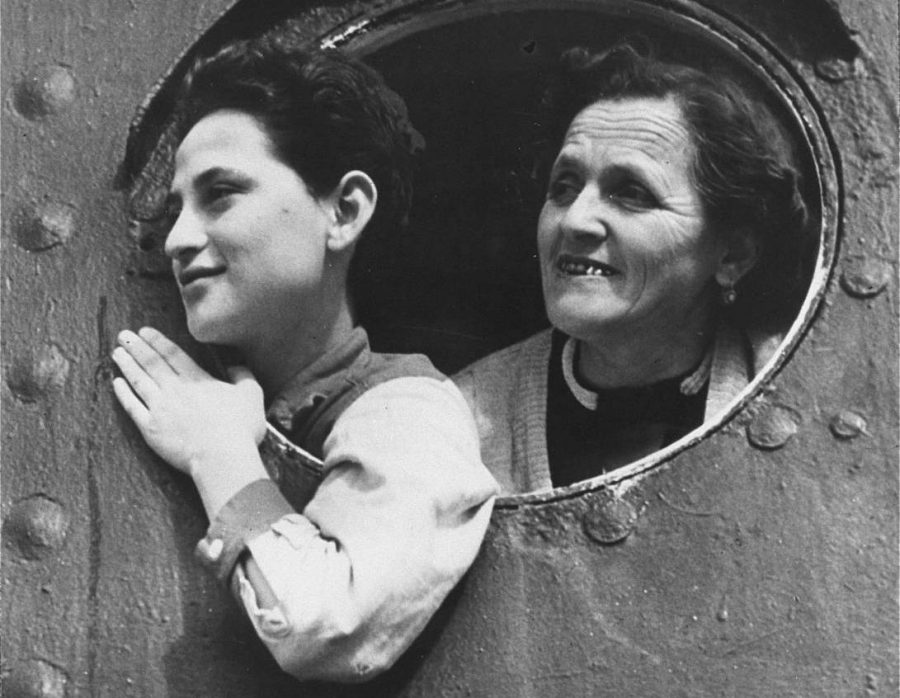The Roots of Ann Arbor
Professor Simone Kropf recently made a discovery. In her research on the relationship between the United States and Latin America during the 1930s, she stumbled upon some documents from the International Center at the University of Michigan detailing a list of refugees from Europe fleeing World War II who settled in Ann Arbor. Many of these refugees settled in the Burns Park neighborhood, specifically on Lincoln Ave, where Kropf is renting a house for a year before she moves back to home to Rio de Janeiro, Brazil.
She found this list when she was looking into two groups closely associated with the International Center: the Foreign Student Committee of Ann Arbor, and the Ann Arbor Committee on Refugees, both of which are Quaker organizations.
“The link between these two committees was a person from the International Center named Robert Klinger,” Kropf explained “[He] was a member of both committees.” Klinger kept documents about the committees’ work, including a list of people that they were trying to help. “That caught my attention, because it’s so personal,” Kropf said. “They have the names, the age, the situation, the people. They reported each case.”
A certain couple from Vienna touched Kropf the most; Louis and Elise Reischer fled from war-torn Austria to New York in 1938, and moved to Ann Arbor in 1939. They settled in a house on Lincoln Ave, just two houses away from Kropf’s current home. They came to Ann Arbor, Kropf estimates, because of the extraordinary work the International Center had been doing to help refugees, something that moved her. “I was touched by this story because I think history is about big processes and big things, but also about very personal, very specific, very micro situations that are really intense,” Kropf said.
The men who made it possible for these refugees to find a home away from the war during these trying times were the aforementioned Robert Klinger, as well as the director of the International Center at that time, Arthur Dunham. Dunham was a Quaker and a member of the Ann Arbor Committee of Refugees. This meant that he was a pacifist, so when he refused to fight in the previous war (World War I), he was arrested and thrown in prison. According to Kropf, after his release in 1935, he moved back to Ann Arbor to become one of the saviors of European refugees.
All of this was happening in the late 1930s, when the U.S. was limiting the number of refugees allowed into the country, which culminated in the disaster that was the voyage of the St. Louis. The St. Louis was a passenger ship which shipped nearly 1000 Jewish refugees from Hamburg, Germany, to Havana, Cuba. Once the ship reached Cuba, only twenty-eight passengers were let into the country. Twenty-seven of them had valid entry passages, while one was escorted to a hospital in Havana after attempting suicide because the thought of going back to Germany was too much to bear. The St. Louis, carrying the remaining 908 passengers, then sailed to Florida, where again the refugees were rejected. The ship sailed back to Europe, where most of the passengers had successfully escaped the holocaust, but according to the Holocaust Memorial Museum, “278 survived the Holocaust. 254 died: 84 who had been in Belgium; 84 who had found refuge in Holland, and 86 who had been admitted to France.”
Many historians look upon this decision to not let in hundreds of refugees only to see around 500 of them captured by the Nazis as one of the darkest days in terms of immigration policy in U.S. history. The United States never wanted to be involved in the war. It was not until Japan attacked Pearl Harbor in 1941 that the United States finally entered the war, about two years after Nazi Germany invaded Poland. In fact, this type of isolationism has historical precedent in American history. George Washington established this position as the United States’ first foreign policy, after announcing at the start of his second term that he would not help France in their war against what seemed like the rest of Europe. In his farewell address, he said that the United States would and should remain an isolationist country, and that policy weathered the political storms that would come in the next century.
The United States remained isolated from foreign nations until World War I, after which it started to become a global superpower. Even so, the U.S. refused to enter the League of Nations, an international alliance of countries founded after World War I to keep the world at peace. Even though it was under pressure from prominent people like President Wilson (who campaigned across the country to promote the League of Nations so vigorously that he got sick and died), isolationism still flourished in the United States. However, at the time of World War II, the inklings of isolationism started to weaken in America’s foreign policy, but the inklings still led to President Roosevelt’s reluctance to let in refugees and join the war. After the war, America completely abandoned the isolationism it had held so dear, becoming involved in what seemed like every major conflict the world encountered. Today, however, President Donald Trump has started to bring this idea back to America’s foreign policy.
With his second most famous slogan, “America First,” President Trump announced that he was trying to isolate America from the world again. One of his most adored ideas by his supporters is to build a wall along the border of the United States and Mexico. In his speech where he announced he was going to run for President, he made his motives for thinking of the wall very clear. He said that the Mexicans were not “sending their best people” when they came across the border. He continued. “They’re bringing drugs. They’re bringing crime. They’re rapists. And some, I assume, are good people,” he said.
President Trump’s foreign policy also takes a isolationist stance on refugees. In the midst of the turmoil going on in the Middle East, Trump announced a ban on all refugees from eight of the countries that most needed help. This ban was shot down in many courts across the country, but the Supreme Court allowed it to continue until the Court could reassess the policy in 2018. Trump also declared a metaphorical war on sanctuary cities and states, places where the local government does not adhere to the federal regulations on immigration. According to Nicole Rodriguez of Newsweek, “the Trump Administration wants to arrest the mayors of sanctuary cities.”
Ann Arbor, in the 1930s and 1940s, albeit not explicitly, was one of the first sanctuary cities in American history. According to the Economist, sanctuary cities are defined as “American cities, counties or states that protect undocumented immigrants from deportation by limiting cooperation with federal immigration authorities.” According to that same article, the first officially recognized sanctuary city was Los Angeles in 1979, 40 years after Ann Arbor helped refugees overcome the limits of lingering isolationism in the United States. Before awarding Ann Arbor with a medal and certificate of honor, however, one might caution that the records that Robert Klinger kept did not specify whether the refugees were documented or not, but even if they were, Ann Arbor was still a safe haven for refugees because of the kindness of human beings like Klinger and Dunham. These are the micro, personal situations that inspire historians. These are the situations that keep Simone Kropf, and the rest of the country, grounded in history.











